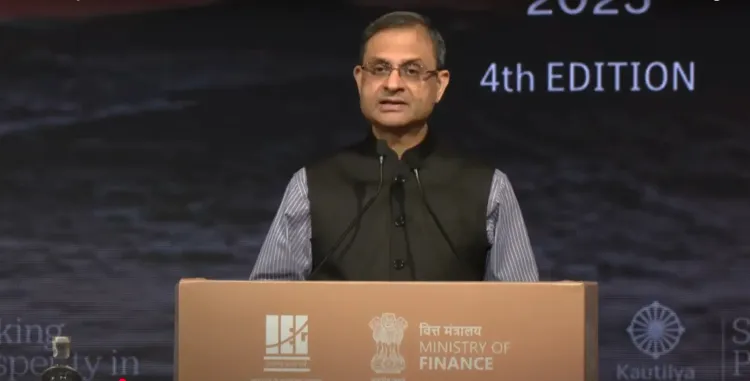How Does India Stand Out as a Unique Anchor in a Volatile World?

Synopsis
Key Takeaways
- India is a pillar of stability in a volatile global economy.
- Strong macroeconomic fundamentals contribute to its resilience.
- Effective policy measures have helped maintain low inflation rates.
- India's proactive approach can serve as a model for other economies.
- Gold prices may reflect global uncertainties akin to oil trends.
New Delhi, Oct 3 (NationPress) In the face of global upheaval driven by trade tensions and geopolitical disturbances, India emerges as a remarkable pillar of stability, according to RBI Governor Sanjay Malhotra's remarks on Friday.
Speaking at the fourth Kautilya Economic Conclave held here, Malhotra emphasized that policy continuity, institutional resilience, and ongoing reforms have played a critical role in allowing India to dodge significant financial crises and maintain its position as one of the fastest-growing large economies, with inflation set to revert to the RBI's target range of 4 percent by February 2025.
The RBI chief drew attention to the disparity between India and advanced economies regarding their ability to manage the repercussions of the US tariff chaos and other global economic challenges.
"India's macroeconomic fundamentals remain robust, characterized by low inflation, substantial foreign exchange reserves, a limited current account deficit, and strong balance sheets for both banks and corporations," he stated.
"This success is attributed to the combined efforts of government policy makers, regulators, and various entities within the economy. Overall, despite recent challenges, India seems to have found a stable path of resilient growth," he added.
In this context, Malhotra observed that over the last two decades, central banks globally have transitioned from being "constant guardians of price stability" to becoming first responders amid continuous shocks, from the 2008 financial crisis to the eurozone debt crisis, the Covid-19 pandemic, Russia's war in Ukraine, and climate-induced disruptions.
"While you cannot control the storm, you can certainly navigate the ship," he commented.
For India, this navigation included a balanced strategy of aggressive monetary easing during the pandemic, decisive liquidity support with clear exit strategies, and a swift tightening cycle once inflation exceeded acceptable levels in 2022, Malhotra explained.
Looking forward, he suggested that the global economy might continue to underperform against its true potential for years. Elevated tariffs, rising public debt, and overconfident equity markets pose risks that are not completely factored in, potentially leading to fiscal dominance that could limit monetary policy in numerous economies, he warned.
“Gold prices are perhaps now reflecting movements similar to those of oil in the past, acting as a barometer of global uncertainty,” Malhotra remarked.









